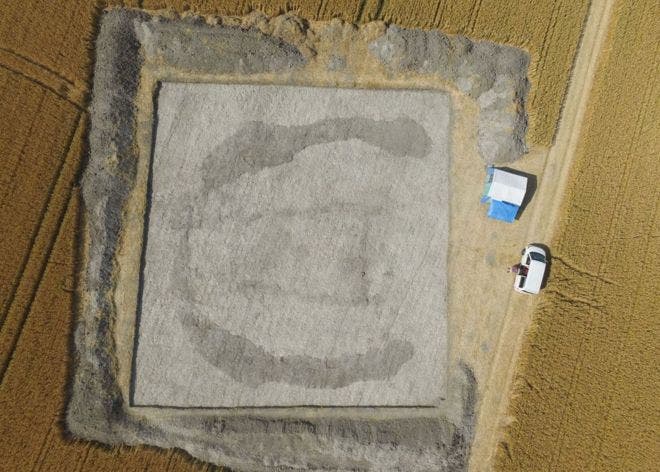A stunning Neolithic site located under a farmer’s field could contain human remains from over 5,000 years ago, researchers say.

It’s a land that has been plowed for millennia, generation after generation of farmers taking advantage of the fertile soil, not knowing what their crops were planted above. As a result of this practice, shallow objects have been shaved off, and archaeologists can only find features that lie deep down — but even that alone is well worth it.
The site lies in an area a place called Cat’s Brain in Pewsey Vale, somewhere halfway between Avebury and Stonehenge in Wiltshire. It seems to two ditches and an apparent central building, which may have been covered by a mound, potentially containing important human remains.
The site is not only one of the oldest in the UK and one of the first of its kind to be excavated in decades, but also fills in a very important timeframe, a time when people were transitioning from a hunter-gatherer society to farming-based settlements. From the excavation, archaeologists hope to learn more about who these ancient people were. Dr Jim Leary, director of the Reading University’s archaeology field school, said:
“Opportunities to fully investigate long barrows are virtually unknown in recent times and this represents a fantastic chance to carefully excavate one using the very latest techniques and technology. Discovering the buried remains of what could be the ancestors of those who built Stonehenge would be the cherry on the cake of an amazing project.”
Leary’s feelings were echoed by Amanda Clarke, co-director, who emphasized the rarity of such finds:
“This incredible discovery of one of the UK’s first monuments offers a rare glimpse into this important period in history. We are setting foot inside a significant building that has lain forgotten and hidden for thousands of years.”
However, it’s modern technology that helped us find this ancient site. Aside from the aerial photos, a geophysical survey revealed the location and structure of the mound. Geophysical surveying involves using various physical measurements (electrical, magnetic, radar) to measure parameters of the subsurface. Since man-made structures and materials exhibit contrasts to the surrounding soil, these contrasts can be mapped out and to some extent, the location of the archaeological structure can be determined. This approach has drastically improved the efficiency of archaeological surveys, improving accuracy while also reducing costs and work times.






